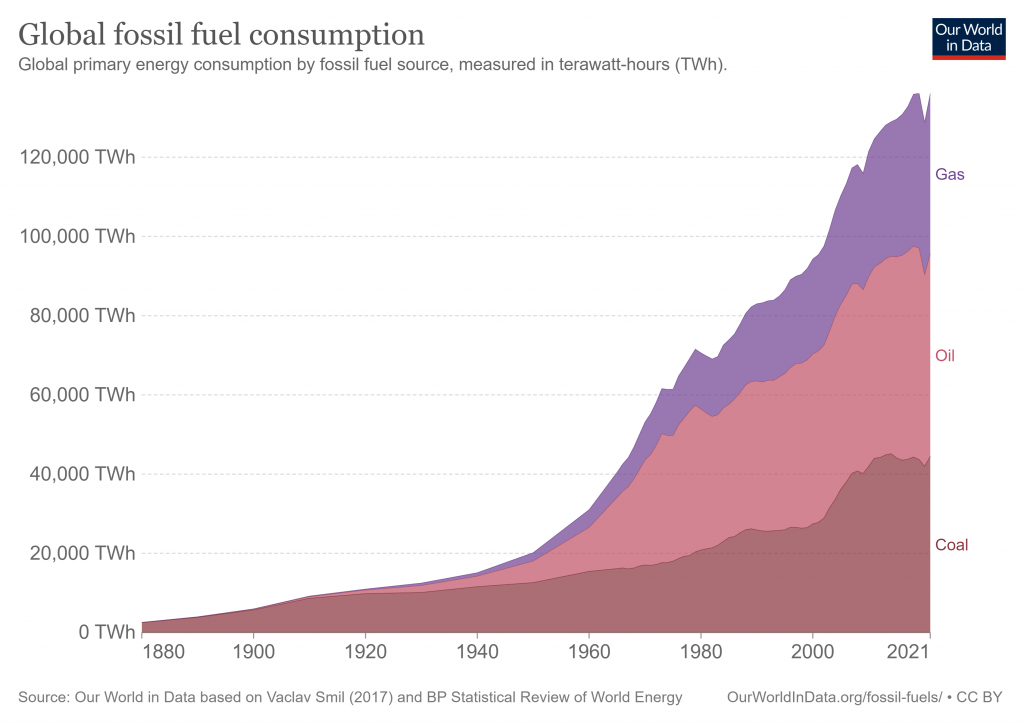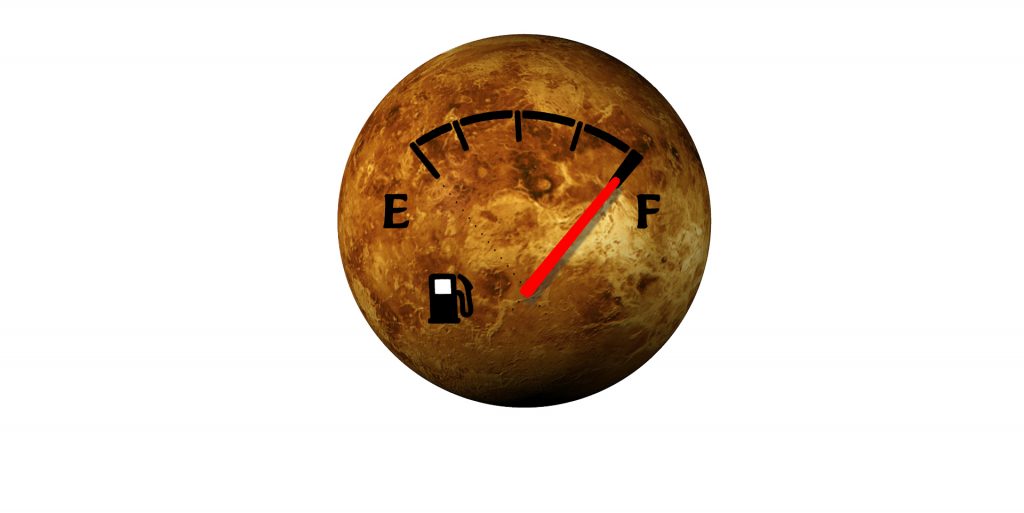 ne of the big issues the world is currently facing is the lack of fuel that is left on this planet. Scientists who have analyzed the global consumption of fuel (taking into consideration most types) have come to the conclusion that we only have about 50 years left until we completely run out of fuel. This brings different kinds of issues, as we have observed from political tensions to economical crises, however, this also pushes the world to invest in greener technology. Despite the hopeful visions of a green future, this world is far from being able to live without fuel.
ne of the big issues the world is currently facing is the lack of fuel that is left on this planet. Scientists who have analyzed the global consumption of fuel (taking into consideration most types) have come to the conclusion that we only have about 50 years left until we completely run out of fuel. This brings different kinds of issues, as we have observed from political tensions to economical crises, however, this also pushes the world to invest in greener technology. Despite the hopeful visions of a green future, this world is far from being able to live without fuel.
Data from “Our World in Data” shows that we could be expecting to reach a new peak in the history of fuel consumption.

So what could be the answer? As humans have evolved to live and breathe in consumerism through destruction, scientists have started to look at different planets for fuel. This year many scientific papers have been published pointing out the possibility of Mars housing large quantities of hydrocarbons which are the main component in the creation of fuel.
The research work by Dr. P K Padhy, an alumnus of the Indian Institute of Technology, ISM Dhanbad, is focused on the geological conditions on Mars 3.5 billion years ago and the possible existence of organic matter for the generation of hydrocarbons on Mars. This has been explained through a paper he published, entitled “Presence of Hydrocarbons on Mars: A Possibility” in the peer-reviewed international journal of American Association of Petroleum Geologists DEG, ‘Environmental Geosciences’, vol.28, number 1, 2021 in the USA. The research paper suggests the probable generation of Martian oil and gas, equivalent to the prevailing Proterozoic petroleum deposits of the Earth.
There exists a fair degree of geological similarity between the internal structure of Mars, its orbital cycle, and axis tilt with that of Earth. The early plate tectonics along with subaerial volcanism might have emitted oxygen on Mars as evident in the geological history of Earth during the Archaean-Proterozoic transition.
A comparative geological phenomenon between Meso-Neoproterozoic (1,600-540 million years) petroleum geology of Earth and the equivalent Amazonian and older periods of Mars has been analyzed in the light of the envisaged hydrocarbon generation and entrapment on early Mars.
The presence of the earliest organic species, 3.7 billion years ago, had been established on Earth. Ideal conditions like the presence of lakes, oceans, and evidence of glaciation infer the probable evolution of life in early Mars. The depositional morphology like alluvial fans, debris flow fans, deltas, and lacustrine fans implies possible sedimentation processes active on early Mars.
The biogenic remains, amorphous organic matter, algal filaments associated with the Proterozoic strata have generated hydrocarbons on Earth. The Meso-Neoproterozoic (1,600-540 million years) petroleum system has been established in various basins of the world with hydrocarbons trapped within the basement-controlled structures. The Pan-African tectonism of the Neoproterozoic age (1000-540 million years) witnessed the deposition of salt-anhydrite, carbonate and sandstone in different basins of North Africa, Siberia and Asia (Gulf, Oman, China, Pakistan, India) and Australia. The occurrence of hydrocarbons has been observed in the Meso-Neoproterozoic strata of Lena-Tunguska basin, Siberia, Bohai basin and Sichuan basins in China, Taoudenni Basin of North Africa , Sao Francisco Basin of Brazil, Amadeus and McArthur basins of Australia, Eastern Flank province of southern Oman and Vindhyan basin, Bikaner-Nagaur basin of India.
The organic matter on Mars could be in-situ or could have been delivered by meteorites. The presence of organic molecules of benzene and propane in 3 billion-year-old rock samples has been evidenced in Gale crater on Mars. The deposition of source rock and subsequent decomposition of organic matter could have generated hydrocarbons in early Mars. The organic shale deposited within the Valles Marineris rift along the Martian equator could act as a good source. The Gale crater is presumed to be a vast salty lake with possible deposition of lacustrine source rock. The salt-loving methanogenic archaea-type microorganisms might have existed in mass. The high geothermal heat presumably could have facilitated the generation of hydrocarbons. It is envisaged that oil and gas deposits could be preserved within the ancient traps associated with the rift basins and in the crater-induced basins on Mars.
The evidence of the existence of the fluvial system has been observed from the Late Hesperion (3.5 billion years) through the Amazonian periods. The depositional morphologies, similar to that of on Earth, like alluvial fans, debris flow fans, deltas, lacustrine fans, and aeolian bedforms have been interpreted as implying the existence of an active sedimentation process on Mars. Primarily conglomerate, sandstone, stromatolite and limestone constitute the reservoir rocks and hydrocarbons are accumulated in structurally controlled traps with shale and evaporite acting as effective seal rocks.
By analyzing the petroleum systems of Earth during Meso-Neoproterozoic (1,600-540 million years) time, the research paper enumerates that Earth’s analogous early hydrocarbons might have been generated and preserved in ideal locales like the ancient Valles Marineris rift and crater-induced basins. Dr. Padhy envisaged that the Valles Marineris rift basin developed along the late Nochian-Early Hesperian tectonic grain and characterized by large-scale strike-slip faulting during the Late Amazonian time (0.7 Ga or younger) could possibly be the Proterozoic equivalent petroliferous rift province of Earth and reactivated at a later time.

Dr. Padhy has postulated that broadly there could be three petroleum systems on Mars. The Valles Marineris rift basin including some crater-induced basins could be the Proterozoic equivalent petroliferous rift province of Earth. Gas hydrate petroleum system holds could be another promising deposit. The unconventional petroleum system of abiotic methane generated as a fractionation product of magma crystallization, serpentinization, and by the Fischer-Tropsch-Type process could also be an important gas deposit on Mars.
The findings in the paper have attracted global attention among space scientists. Dr. Padhy’s postulation has been appreciated by NASA scientists. Do we try to save our planet or look towards transitioning to a new one?
Avid Writer with invaluable knowledge of Humanity!
Upcoming historian with over 30 million views online.
“You make your own life.”





